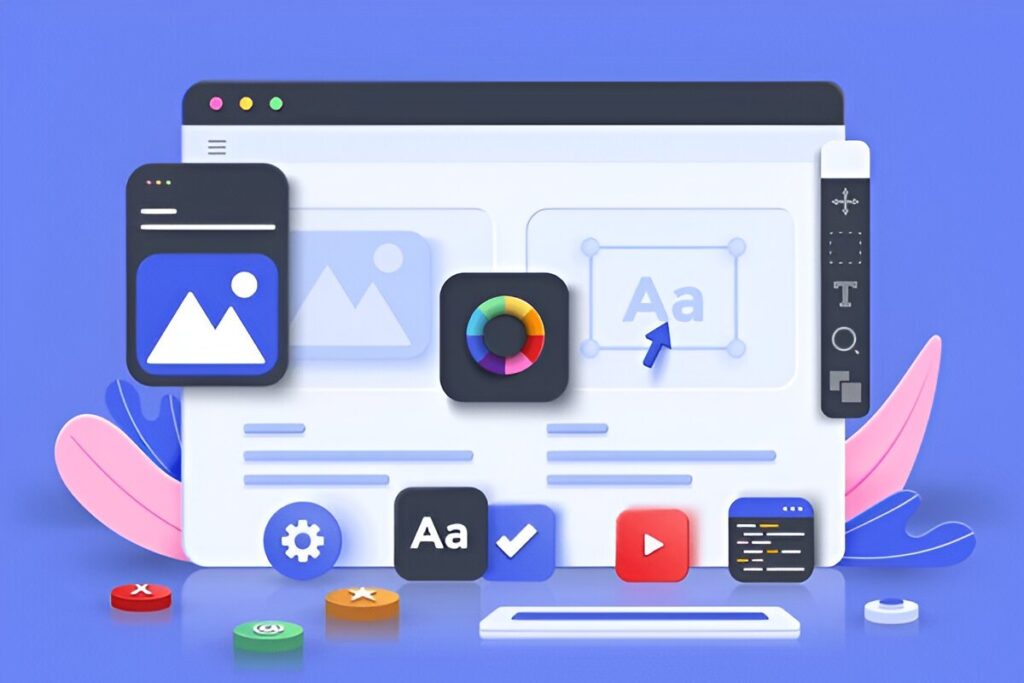You’re not alone in trying to decide between Figma and Adobe XD. These two design tools have dominated the UI/UX space in recent years, and many creatives still struggle to choose between them in 2025.
Whether you’re a freelance designer, part of a product team, or just getting started in technology, knowing which tool to learn or invest in can save you time, money, and stress. In this guide, we’ll compare Figma and Adobe XD on the most important metrics—collaboration, performance, pricing, features, plugins, and real-world use cases.
Let’s cut through the confusion and help you choose the best tool for your design journey.
Comparism Between Figma and Adobe XD
| Feature | Figma | Adobe XD |
| Platform | Web-based (including desktop applications | Desktop app (Mac OS and Windows) |
| Collaboration | Real-time and multi-user | Limited coediting. |
| Offline Access. | Limited | Strong |
| Prototyping | Powerful and intuitive | It’s good, but more manual. |
| Developer Handoff | Built-in | Requires plugins |
| Plugins and Extensions | Large and active library. | Smaller and less dynamic |
| Pricing | The free tier is generous | Paid with a limited free plan. |
What is Figma?
Figma is a browser-based interface design tool that creates UI/UX for websites, apps, and other digital platforms. Launched in 2016, it transformed design collaboration by enabling real-time, multi-user editing in the browser, similar to Google Docs.
Figma allows you to:
- Design responsive interfaces.
- Develop interactive prototypes.
- Share live links with your stakeholders.
- Collaborate with teams without using third-party tools.
Adobe’s announcement in 2022 of its intention to acquire Figma raised concerns among creatives. However, as of 2025, the platforms were still operating independently.
Figma has a unique selling point: it is fast, collaborative, cloud-based, and ideal for modern, agile design workflows.
What is Adobe XD?
Adobe XD (Experience Design) is Adobe’s UI/UX design tool, which was launched to compete with Sketch and, later, Figma. It is a desktop application with high performance and extensive integration with other Adobe Creative Cloud applications such as Photoshop, Illustrator, and After Effects.
XD is ideal for:
- Designers are already familiar with Adobe products.
- Projects that require offline access
- Basic to intermediate prototyping and wireframing.
While XD supports cloud document sharing and limited coediting, it does not function as well as Figma in a team environment.
Adobe XD’s strengths include offline performance, smooth prototyping, and Adobe ecosystem integration.
In-Depth Comparison of Figma vs Adobe XD
Let’s go beyond the surface and examine the tools using real-world criteria.
1. Collaboration and Teamwork.
Figma is designed for real-time collaboration. Multiple people can edit the same file simultaneously, leave comments, and show mockups to clients or developers in real-time. It’s a favourite among distributed teams and startups.
Adobe XD has limited real-time coediting capabilities. You can share files through Adobe Cloud, but collaboration is not as seamless or intuitive.
Winner: Figma—especially for remote teams and agencies
2. Interface and Learning curve
Figma has a clean, user-friendly interface. It is simple for beginners and non-designers to understand. There is minimal UI clutter.
Adobe XD is user-friendly if you’ve previously used Adobe tools. Slightly more advanced features are hidden behind familiar menus.
Winner: Tie – Figma is better for beginners and XD for Adobe veterans.
3. Accessibility and offline functionality.
Figma is web-first, which means you need the Internet to access files fully. Offline mode is available in desktop apps, but it is limited.
Adobe XD is fully offline-compatible, which is critical for users who have limited internet access or are travelling.
Winner: Adobe XD – Ideal for low-connectivity scenarios.
4. Prototyping and Animation.
Figma’s advanced interactive flows, Smart Animate, and component-based interactions make it ideal for product demonstrations.
Adobe XD: Provides decent prototyping, voice triggers, and auto-animation. However, transitions can feel more limited.
Winner: Figma, which is more versatile and scalable for prototyping.
5. Plugins and Ecosystem.
Figma has a large, rapidly growing plugin ecosystem (similar to Unsplash, Iconify, and FigJam). Open source friendly.
Adobe XD also offers plugins but with fewer options and slower updates.
Winner: Figma—especially if you rely on automation or community-made tools.
6. Developer handoff
Figma allows developers to inspect designs directly, get CSS snippets and dimensions, and download assets without the need for third-party tools.
Adobe XD requires Adobe Cloud or tools such as Zeplin for developer handoff.
Winner: Figma – Streamlined, especially for agile workflows.
7. Pricing and Plans.
| Features | Figma | Adobe XD |
| Free | Unlimited personal files, including up to 3 Figma/FigJam files. | However, limited features |
| Paid | $12/editor/month (professional), $45/month (organization). | $9.99/month (standalone); $54.99/month for Creative Cloud. |
Figma’s free plan is ideal for freelancers, individual designers, and early-stage teams.
If you already have a Creative Cloud subscription, Adobe XD becomes more valuable.
Winner: Figma – More generous free tier.
8. Integration with other tools.
Figma integrates seamlessly with Slack, Notion, Jira, Framer, and other platforms.
Adobe XD integrates seamlessly with Photoshop, Illustrator, and After Effects.
Winner: Depends—Figma for modern workflows, XD for Adobe-centric teams
Use Cases: Who Should Use Which?
| Role/Team | Best Option | Why |
| The Remote Design Team | Figma | Real-time collaboration. |
| Adobe Powered Agency | Adobe XD | Smooth integration |
| Beginner UX Designer | Figma | Easier to learn and free to start |
| Offline Designers | Adobe XD | There is no need for the Internet. |
| Startups | Figma | Cost-effective and collaborative. |
| Advanced animators. | Figma | Improved component animation. |
Conclusion: Figma vs Adobe XD—The 2025 Verdict.
So, who will win in 2025?
If you value real-time collaboration, cross-platform flexibility, and a strong community, Figma is the future-proof solution. It is the tool that most startups, product teams, and design firms are switching to.
That being said, Adobe XD is not obsolete. If you work primarily offline or are already integrated into the Adobe Creative Cloud ecosystem, XD can still be a viable option—particularly for solo work.
Our recommendations:
Figma is ideal if you want modern workflows, team-friendly features, and extensive integrations.
Adobe XD is recommended for Adobe professionals who require offline access and tighter Adobe integration.
FAQs on Figma vs Adobe XD
Q1: Can you import Adobe XD files into Figma? Not directly. You’d need to use third-party tools or manually rework elements.
Q2: Will Adobe phase out XD now that it owns Figma? There has been no official announcement, but Adobe has slowed XD development since the Figma acquisition attempt. Figma is undoubtedly the future.
Q3: Which is better for mobile app design? Both work, but Figma has superior team support and scalable design systems.
Q4: Do developers prefer Figma? Yes. Most developers prefer Figma because of its simple handoff tools, browser access, and quick inspection capabilities.
Q5: Can you work with Figma offline? Partially. The desktop app allows you to access some files, but syncing or collaborating requires an internet connection.
Ready to choose?
Still undecided? Start with Figma’s free version and then try Adobe XD if you already have Creative Cloud. The best way to find out what works for you is to try both in action.


